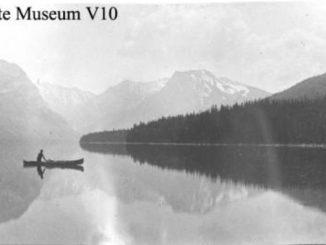February’s Dog is an independent project filmed in parts of rural southern Alberta that exposes the human ramifications of a feast or famine oil economy. The story follows characters, Dale and Nigel as they struggle with depression after being laid off from an oil company. Produced by Luctor Pictures, the film is directed by Candace Gonzales and stars Paul J. Chinook, Kevin Davey, and Quinn Teechma. Wearing perhaps a few too many hats, Chinook also wrote the screenplay and was the lead producer for the project.

Let’s be honest. This isn’t a perfect film. The dialogue is overwritten. The recitation of the dialogue sounds canned. The acting feels unnatural. Important moments telegraph themselves long before those moments appear, and the characters are not proactive. They wait. They wait for the jobs to come. One of the biggest sins might be the message itself, which implicitly suggests that, ‘if only we had our jobs, we could avoid mental illness, alcoholism, and perhaps save our very lives.’
Now, here’s the irony: Much of the imperfections of February’s Dog are precisely what gives this independent film its authenticity. Chinook, Gonzales, and their co-creators should be commended for capturing a slice of rural life that Hollywood hardly ever examines. That uneven lighting? That handheld camera wobbling? That’s precisely what makes this film feel gritty and real. These men are out of sorts. It’s those extra-textual moments that build a foundation for these men to reside in the shambles. It’s that creation of un-Hollywood-like moments that should be celebrated.
While the performances mostly suffer from uneven writing and direction, there is a quality of Chinook that makes him a watchable actor. He reminds me of a cross between Edward Burns and Dax Shepard. He’s got a rustic and gentle appeal that merges into despair as his character plunges even deeper into depression. Davey does the best at making clunky dialogue sound natural. He’s the odd kind of backbone in this film. The British ex-patriot in rural Alberta, trying to lift the spirits of those around him, while saying the word “dude” way too many times.
And in a few and far between places in this film, there are truly prized moments: Drone footage capturing horses running across golden prairies. Footage that shows the stark reality of winter, and the torturous miles of ice and snow. And what the director and the editor manage to do with the image of the pump jack should be studied in film schools. Early on it’s a symbol of hope and livelihood set against a blue sky. But later it becomes something else: With just the right low angle, with the right music, with the right lighting and the right timing, the pump jack sheds its hopeful image and becomes a dark metaphor. It symbolizes a kind of grim reaper foreshadowing bad things to come. These are the moments that might be worth more than the film’s $50,000 budget. Yes, you read that right.
While showcasing men out of work isn’t necessarily an original conceit, there is something novel about examining this through the lens of the Albertan oil economy. Yes, it feels personal, but it may also illustrate to others the challenge of trying to survive and subsist in a very specific economic environment. On one hand, it’s a film that preaches to a local choir, but it’s also a film that attempts to induce empathy and understanding from urban outsiders to show the difficulties of being locked in a system that is slowly dwindling.
I have a hunch this is the reason the film is moving toward its next great adventure. February’s Dog will be showcased at the renowned Marché du film in Cannes, France from May 17th-May 25th, 2022. Hopefully, the right people will see the small miracles in this film. While there are plenty of problems, there is just enough promise to believe the next one will be even better.
***
For more information about February’s Dog, click the link here.




